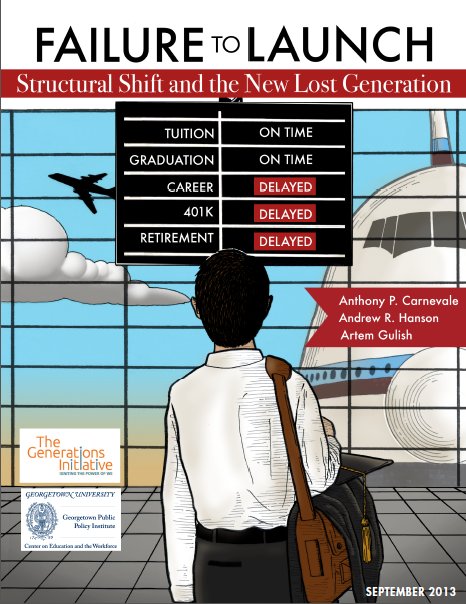Failure To Launch
Structural Shift and the New Lost Generation
Key Findings
Resources
Our report analyzes the divergent labor market trends for young and older adults since 1980. The report is a joint effort by the Georgetown University Center on Education and the Workforce and The Generations Initiative.
Between 1980 and 2012, significant structural economic shifts produced a new postsecondary phase in the labor market entry of young adults, delaying their career launch. Older adults are working longer; however, they are not crowding young adults out of the labor market. In fact, today there are more job openings per young person resulting from retirements than there were in the 1990s.


